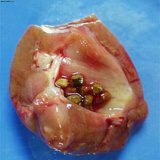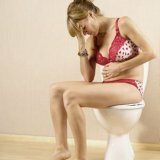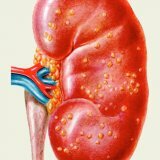Cystitis: the best methods of treatment and prevention

What is cystitis?
Cystitis is a disease of the bladder. Ironically, this is a purely female disease, although it is not gynecological.
Causes of the disease.
1. Feature of the anatomical structure of organs.
2. Penetration of microorganisms into the bladder. If the body has foci of chronic inflammation, then with the bloodstream, microorganisms can enter the bladder.
3. Decreased immunity, hypothermia, overwork, hypovitaminosis. There is a destruction of the protective layer of the bladder. As a result, microbes easily penetrate the cells of the mucous membrane. And it causes inflammation.
Cystitis is non-infectious, infectious, interstitial.
1. Non-infectious cystitis. Non-infectious cystitis is formed as a result of urinary irritation of the mucous membrane of the bladder. Such urine contains aggressive chemicals. They can be formed with prolonged intake of antibiotics, alcohol or as a result of hypothermia. The main thing is to start treatment in time, otherwise the infection will join the non-infectious cyst.
2. Infectious cystitis .Infectious cystitis is the result of any infection in the human body. This kind of cystitis can occur in acute form or in chronic form. An acute form of cystitis is formed after infection. If you delay the treatment of a specialist, the cystitis will pass into a chronic form. In addition to this, infectious diseases that caused cystitis are progressing. It can be a dysbacteriosis or sexual infections. The chronic form of cystitis is similar to the acute form. Chronic cystitis is a disease that does not pass through, with constant relapses that resemble acute cystitis.
3. Interstitial cystitis. It is characterized by an inflammatory process, which extends over the entire thickness of the bladder, while not only the mucus, but also the submucosa, and also the muscular wall become inflamed. Interstitial cystitis almost does not respond to treatment. The operation is inevitable. Features of such a cystitis:
Examination.
- Biochemical and clinical blood tests;
- To determine the source of the pathogen that caused inflammation, urine culture is carried out;
- Conduct a urine flow study;
- Conduct ultrasound of the bladder and kidneys;
- Cystoscopy is performed.
Methods of treatment of cystitis.
After the urologist has conducted the examinations, he will be able to draw up a treatment plan. Usually treatment is designed for 2 weeks. But noticeable improvements come in a few days. Even if the symptoms of the disease have disappeared, the course of treatment must be completed completely. Remember that the cured cystitis in a short time will necessarily repeat, and can even give a complication to the kidneys. The best methods of treatment include a set of therapeutic measures. The treatment usually includes the appointment:
You can not replace herbs with herbs. You can only add to the treatment of prescription phytotherapy.
Herbal treatment. Here are a few recipes that are recommended by folk medicine:
- Put 6 finely chopped medium-sized bulbs in an enamel pan. Pour 1 liter of boiled water into a saucepan. With the lid closed, simmer for 20 minutes on low heat. After cool, strain. On an empty stomach it is necessary to take this broth for 1 glass.
- For one glass of boiling water, take 1 tablespoon of aspen buds or bark, or leaves. To boil it is necessary 7-10 minutes. Wrap the saucepan and let it brew for 30 minutes. Take should be 2 tablespoons 3 times a day.
- Prepare the infusion of aspen buds on vodka in a 1:10 ratio. Take 30 drops 3 times a day.
- 5 drops of birch tar add a glass of warm milk, 3 times a day should drink 1/3 cup.
- Mix horsetail field, rhizome root, leaves of plantain. Each take should be 1 tablespoon. Now pour two cups of boiling water one tablespoon of the mixture. Wrap up, letting it brew for 1 hour. Strain, take in the evening for 1 glass of warm infusion.
- Take 1 tbsp. L.Dill with seeds, brew in a glass of boiling water. The broth should be infused for 30 minutes. Take a third of the glass before meals 3 times a day.
Methods for the prevention of cystitis:
What can not be done with cystitis:
- You can not warm the lower abdomen. This can cause an increase in inflammation. Strictly contraindicated to visit the bath, sit in a hot tub.
- You can not go to the pool, take a contrast shower, pour cold water.
- You can not stay in one position for a long time. If you stay in one position for a long time, stagnation in the small pelvis may occur, and this in turn can lead to chronic cyst.



